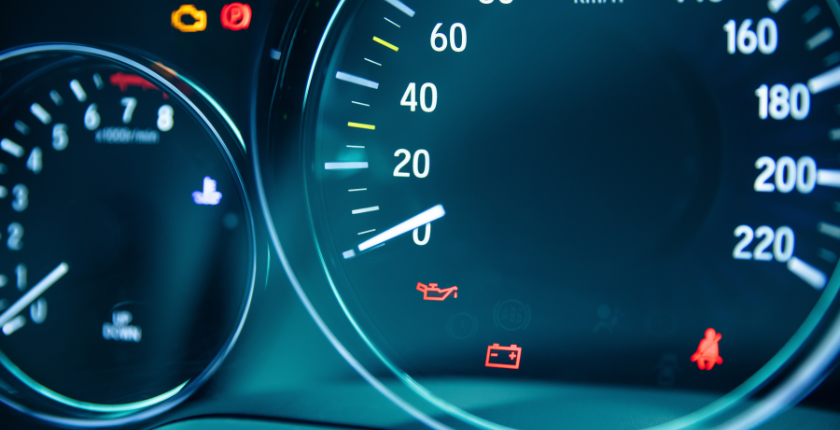Table of Contents
Discover the crucial meaning behind the ‘Oil Pressure Low Stop Engine’ warning light. Learn about causes like low oil levels, pump failure, and more. Safeguard your engine with preventive maintenance.
An oil pressure low stop engine warning illuminates your vehicle’s instrument cluster when the oil pressure drops below the normal operating range. This is a serious issue that requires immediate attention, as continued operation with low oil pressure can lead to extensive engine damage. In this article, we’ll explore the meaning behind the oil pressure warning and the various causes that can trigger it.
What Does Oil Pressure Low Stop Engine Mean?
The oil pressure warning light indicates that the oil pressure inside your engine has fallen below the adequate level to properly lubricate internal components. Engine oil circulates through narrow passages to reduce friction and cool critical parts. Without sufficient oil pressure, the close tolerances in the engine will not receive adequate lubrication between metal surfaces moving at high speeds.
Most vehicles have an oil pressure sensor located near the oil filter or inside the crankcase. This sensor monitors real-time oil pressure and will illuminate the oil warning light if pressures drop too low, usually below 5 to 10 psi when idling.
When you spot the oil pressure low forestall engine mild, it means the oil isn’t always circulating nicely. Continuing to function the engine with this caution gives risks of serious harm from overheating and direct steel-on-metallic touch. You should safely pull over and shut off the engine immediately to prevent catastrophic failure.
Also Read: Unsuccessful Draft Pick
What Causes Low Oil Pressure?
There are several potential causes behind low engine oil pressure:
Low Oil Level
The most common cause of low oil pressure is simply having an insufficient amount of oil in the crankcase. Oil levels naturally drop over time as a small percentage burns off in the combustion process. An engine oil leak can also lead to declining oil levels.
Check the dipstick when the engine is off and has had time to drain return to the oil pan. If oil is close to or underneath the minimum mark, add oil right now in step with the manufacturer’s specs.
Oil Pump Failure
The oil pump circulates pressurized oil throughout the lubrication system. If it fails or has reduced output, oil pressure can drop well below the normal range. Oil pump problems are often tied to wider engine issues.
Worn bearings in the oil pump can reduce pressure, as well as clogged pick-up tubes or damage from debris. The oil pump itself is driven by the camshaft or crankshaft, so problems like timing chain stretch can impede its optimal function.
Thin or Diluted Oil
Engine oil is designed to maintain viscosity at high operating temperatures. But oil contamination like coolant leaks, or even fuel dilution can significantly thin out the oil.
Thinned oil flows more easily but provides reduced lubrication and has lower resistance to pressure. Contaminants in the oil can also damage internal clearances between bearings and mating surfaces.
High Mileage Engines
As an engine accumulates mileage, internal components develop larger clearances from normal wear and elongation. This increased space means higher oil pressure is required to properly coat and lubricate surfaces.
Older engines with wear may begin to show low oil pressure indications despite an adequate oil level. Using a heavier viscosity oil can help maintain pressure.
Clogged Oil Filter or Lines
Restrictions and blockages in the oiling system can reduce pressure. Oil filters capture contaminants over time and can become restricted. The filter bypass valve will open if pressure drops too far.
Sludge buildup and debris can also clog internal oil passages and the strainer screen on the oil pickup tube. Any restrictions increase resistance to flow and lower system pressure.
Damaged Bearings or Journals
Problems like worn main or rod bearings damaged camshaft and crankshaft journals, and excessive cylinder bore wear all increase internal oil system clearances. These widened bearing to journal interfaces make it harder for pressurized oil to maintain a lubricating film.
Low pressure often coincides with rough engine operation and noises from bearings due to lack of sufficient oiling. Running the engine further exacerbates any wear issues.
Faulty Oil Pressure Sensor
In some cases, the oil pressure warning may be triggered by a faulty sensor rather than an actual loss of pressure. Oil pressure sensors can fail or become stuck in place over time.
This may illuminate the warning light despite normal oil levels. Testing gauges and replacing defective sensors can resolve these false low-pressure situations.

Preventing Low Oil Pressure Problems
You can help avoid low oil pressure problems by:
- Checking oil level regularly and topping off when needed
- Changing oil and filter at factory-specified intervals
- Using quality oil of the proper viscosity
- Diagnosing and repairing any external or internal oil leaks
- Listening for odd noises like lifter clatter or noisy valvetrain
- Watching for excess oil consumption and oil leaks
The engine oil provides essential lubrication and cooling. Letting oil pressure drop too low risks thousands in repairs. Always respond immediately to any oil pressure warning by safely pulling over and shutting off the engine. Identifying the root cause and correcting it promptly can help you avoid significant engine damage down the road.
Final Words
The oil pressure low stop engine warning light is trying to alert you to a potentially serious lubrication issue. Low oil pressure can lead to rapid engine wear or even failure in short order. Diagnosing the specific cause, whether it be low oil level, worn parts, oil pump problems, or other issues, is key to preventing permanent damage. This warning necessitates promptly shutting off the engine and addressing any underlying problems. With proper maintenance and diligent oil checks, you can help keep your engine’s oil pressure in the safe zone. Regular service and using quality oil go a long way in preserving engine health over the miles.




